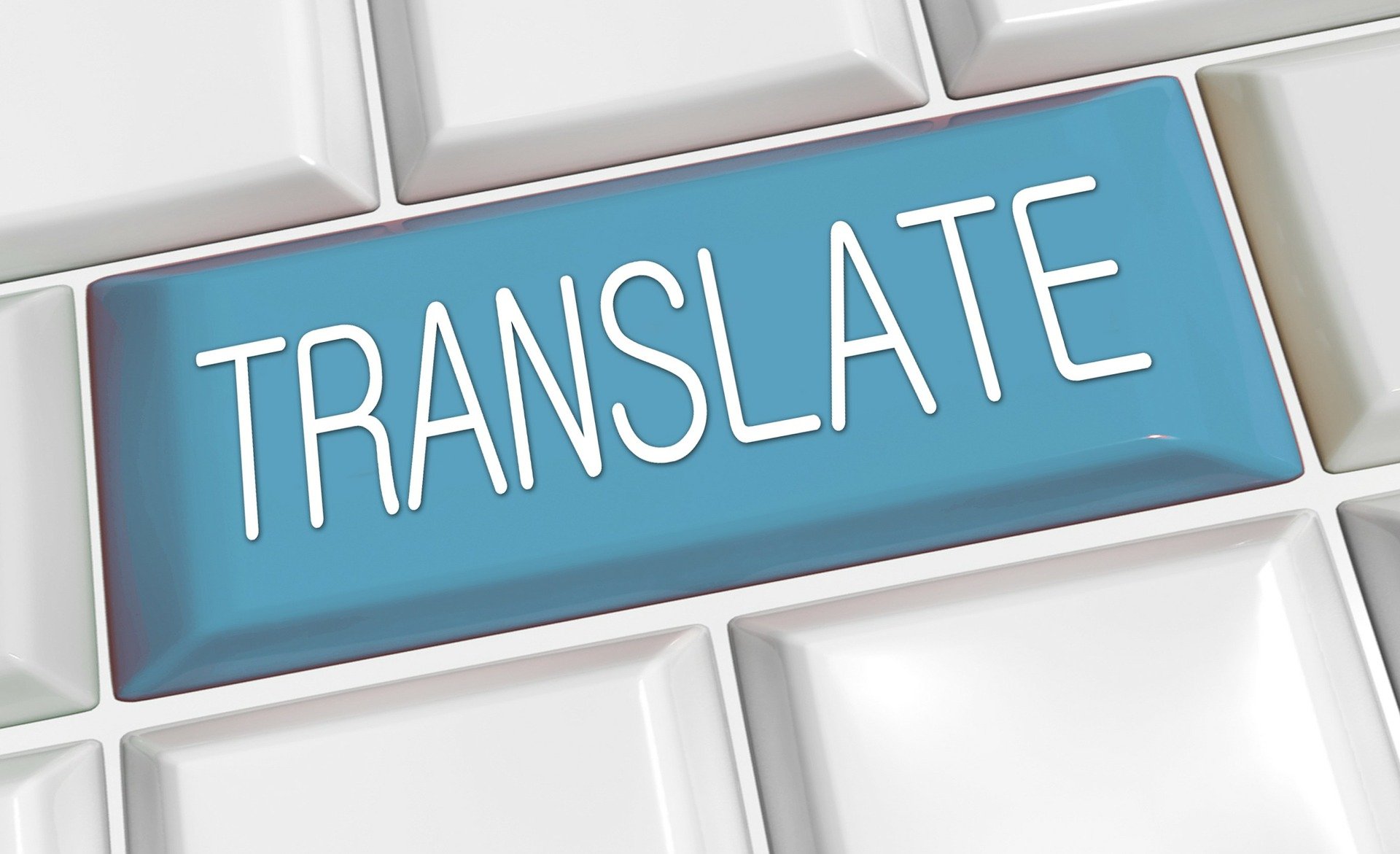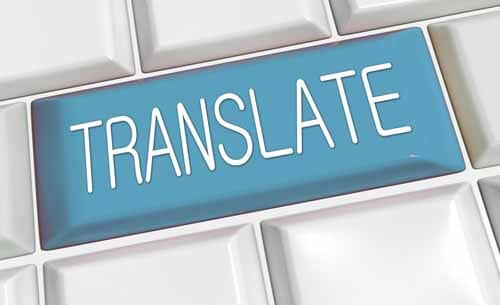Listen to Audio Version:
Recently, I got a call from a client who was upset that her internal reviewers said that the translation they got was “bad” and “done by Google Translate.”
Sixteen years ago, when I first became owner of Rapport International, those words struck terror in my heart. I could not speak all of the 200 languages we provide so how could I know if it was bad?
These days, I take the comments in stride since I know the experience of the translators doing our translations, and what can go wrong with a client’s internal review. Many of our translators have PhDs, and most others have masters’ degrees. All of them have over five years of full-time experience as a translator specializing in their language pair; in addition, our project managers provide what we call “linguistic matchmaking” – they match each client with a translator in each requested language who has experience with the industry and terminology and they keep this translator consistent on all assignments for continuity of voice. A translator never gets hired or assigned until we thoroughly screen them. Many have been with us since the founding of the company over 30 years ago.
What is a Review?
The term “review” or “internal review” refers to the process of sending the translation to the client who then has a bilingual speaker of their choice review the initial translation and make edits. The customer’s internal reviewer can be anyone they choose; an employee, a colleague, a distributer, etc.
The internal review process is an included service, available on every project. We do not charge an additional fee for this process, the only “cost” is time.
Typical Reviewer Feedback
For you to get the best translation for your needs, it is helpful to understand the types of feedback we often receive, the process of how we handle each type of feedback, and suggestions for you to pass along to your internal reviewers to make the process more seamless.
The types of feedback we get tends to fall within several categories:
Spoken word adjustments – written language is more formal than spoken language. Many times, reviewers change grammar to “how it is said”. For example, when speaking we will end sentences with prepositions or use run on sentences. When listening, we can adjust for these grammar errors and understand the meaning. In written language, it is more important to be clear and accurate to keep the reader’s attention and be understood. On one project, community reviewers made comments on a translation that we did for the State of Massachusetts. Since the State employee did not speak the language and heard from the reviewers that the translation was “bad”, we did a phone call with the community representatives to go over their suggested changes. By the end of the call, the community reviewers retracted their edits as it became clear that the changes incorporated bad grammar that was acceptable in spoken language yet not in written language.
Word choice – language has cultural and deeper meanings than what a person can learn when they learn a second language. Professional translators translate into their native language and they fully understand both the source and target languages. Reviewers who are not fully bilingual may change words and thus give a separate meaning. A client once had an employee that had studied Spanish in high school and then did a semester abroad review a translation. When the translator got the edits, he got upset at the incorrect word choices and quoted dictionary meanings to support his original wording. Make sure your reviewer is qualified and only making the changes we suggest below.
|
Track changes – Another time we got feedback that the translation was “bad” and we did not get specific instances of the issues. Imagine you write a whole report and your boss just says “It’s bad”. You need more information to fix it. When we asked the client to track changes so we could discuss it with the translator, they obliged and sent the document back. Upon review of their changes, we saw that there was one word used throughout the document and the reviewer wanted changed. It was a word preference, it didn’t change the meaning, so we accepted their edits and once we did, they were satisfied with the work.
Responsibility of the reviewer and the content – We had a client who wanted to market to Spanish speakers in the U.S. They chose to work with us for translation and a creative marketing agency to create marketing materials for the target audience. When we did the translations, the client had the agency review the them. Their edits to the translation changed the client’s original message, saying that they made it more culturally appropriate. The client felt caught in the middle –they wanted a clear translation of the corporate message, yet they did not want to offend the culture. Ultimately, they decided to go with our translation since we retained the original message and carried a liability insurance policy for accurate messaging. In this case, the message dealt with legalities and regulations, so it was important to be accurate to avoid liability. Always discuss edits with your translation agency and the reviewers to capture the right message.
Language skills of the reviewers – Manufacturers in the US will often have their in-country distributers translate or review the marketing materials. Even though the distributors speak English well enough to transact business verbally and with limited writing, they may not be bilingual enough to capture and convey a marketing message. We often see messages changed to how the distributor sells not how the marketing team differentiates the products or services.
Word preferences – In the US, we use the words dinner or supper to refer to the evening meal. Or we use the words soda or pop to refer to a type of drink. Reviewers may have preferences that ultimately do not make a difference in the translation. When a professional translator sees this, they will accept the change and make a note of that for future translations for that client so they stay consistent. This does not mean the translation is bad, it just is a different style.
Styles vary – Prospects will ask us for translation that is not a “literal translation” – they want a translation that captures the “meaning”, not a word for word translation. And they want it in the register (reading level), style, and voice of the original author. Just like writers, translators have a voice and a style of their own, and their style or voice may not be a good match with a client. One time in the 16 years of running Rapport International, we had a client that did not like the style of the translator. To fix the issue, we had it edited by another translator and once the client approved that translation, we assigned the editor to translate that client’s material in the future. Think about it – you would never have an engineer write your marketing materials. It is the same with translation. This is why we spend time assigning the right translator to each client’s project (linguistic matchmaking).
 The Review Process
The Review Process
When a translation returns from a reviewer, we have the original translator examine all the suggested changes. This is included in our original cost since we want the translation to include feedback from all invested parties.
The translator has a few options as to what to do with each suggested edit.
- Accept changes – if the translator agrees that the change is word preference, a stylistic change or it is one that does not alter the meaning, the translator will accept that change.
- Object to the change – when the translator sees a grammar error or changed meaning, the translator will not accept the change and explain to us and the client why the change does not make sense.
- Ask for clarification – sometimes in the source document, the text may have a double meaning or may not be clear. If the translator read the original one way and the reviewer understands it another way, we will ask for clarification to make sure the translation delivers the intended message.
This back and forth process takes time, but it is a valuable practice to ensure you get the best translation of your materials. Additionally, we want stay involved in the process till the end because we want to keep a copy of the final translation in our files. Some clients have worked with us for more than 30 years and come to us for original content when they want to rerelease a product. Plus, if there is ever a question about the quality of a translation down the road, we have the final content that we approved and the original source document.
Many people who use translation services do not speak the languages involved and feel like they have no control over the quality. When you hire a professional translation agency who practices linguistic matchmaking, works with your qualified reviewers, and discusses areas for clarification, you can rest assured that you’ll get quality translations.
Tips for the Reviewer
In order to avoid getting feedback from reviewers that a “translation is bad” and to make sure you have a process instituted for getting high quality translations, we suggest that you guide your reviewers on how to review a translation in the best possible way.
Here are some tips:
- Appoint a reviewer that is “mostly fluent” in both languages – you want the person to be able to understand the source content and be fluent in the target language. This way they can understand the original and make sure the messaging is accurate in the translation.
- Provide both the source and target documents to the reviewer – if the reviewer is only reading the translation, they will be more tempted to edit the document to include material that is outside the scope of the translation.
- Guide the reviewer to pay special attention to industry and company terminology – your internal reviewer will understand better than anyone else if there are certain terms or phrases that have specific meanings or translations.
- When possible pick a reviewer from the local region – a reviewer that is from, or based in, the geographic region where the translation will be used helps make sure the translation accurately conveys the messages in a culturally relevant way.
After you assign the appropriate reviewer, guide them in how to review the translation. You want to ask them to read for:
Meaning – if the reviewer reads the source content and understands it differently from the translator, ask the reviewer to note how they read it differently so discrepancies can be clarified.
Industry and company terminology preferences – back to our prior example, if company always uses the word “supper” and the translator said “dinner”, change that throughout.
Cultural adaptation – UK and US English use different words. For example, in the UK, they use the terms runners instead of the US sneakers, and bonnet versus the hood of a car. Ask reviewers to change any words that seem “off”.
No direct translation – For words with no direct translation, make suggestions on how to change how the translator handled it if it does not seem appropriate. For example, Kummerspeck is German term for excess weight gain from emotional overeating. It literally translates to grief-bacon. A translators options for a word that cannot be translated can be (1) keep in the original language, (2) give a literal translation (grief bacon), (3) explain it (describe it), or (4) use it in the original language (with an explanation afterwards).
Actual mistakes – If the translation was long or complex and the client opted not to have a professional editor review the translation (this is different than an “internal review”), the reviewer might find some mistakes. Translation is like writing and an extra set of eyes always helps. Ask the reviewer to track changes on any dropped text, extra content inserted, formatting, or other mistakes. Many times, our translators catch mistakes in the original document and we alert the client, so they know to fix the English and we want the client to do the same if they see errors in the translation. We work to develop long-term relationships with our clients – we care about the final product and work hard to make our clients look good. It is a two-way partnership with feedback.
In addition, you want to prepare the reviewer to:
Take time. It takes as long to translate as it does to write. And, in reviewing a translation, it’s going to take a bit of time. The reviewer has to look at both versions and track changes.
Track all changes. Again, let me repeat – track all changes. If a client comes back with it is a “poor translation” we have no way to understand and resolve the issues without seeing their edits. If the changes are tracked, then we can discuss them and give you advice. Plus, the translator learns from all the changes and improves their work in further assignments.
Recognize that all translators have styles. We do linguistic matchmaking to find the right translator for each client and assignment. If the reviewer really does not like the style, explain why so we can adjust it.
The biggest insult you can give a translator these days is that the translation was done by “Google Translate.” Remember: Rapport International translators are trained and experienced professionals who want to do a good job. We are looking to build a long-term relationship with our clients. Candid and constructive feedback helps us get better at understanding what you are looking for so we can continue to improve and you continue to build trust that the translations accurately convey your message/meaning in a culturally appropriate way.
Rapport International specializes in multilingual communications, providing language translation and interpretation services that are accurate and culturally appropriate. We use the right voice and the correct terminology to avoid liability, customize services to your needs, and deliver on time and within your budget. With our 100% satisfaction guarantee, you can trust that it’s done right. Contact us today if you would like more information or to get a free quote.
Popular Posts
Popular industry news, interviews, technologies, and resources.



















